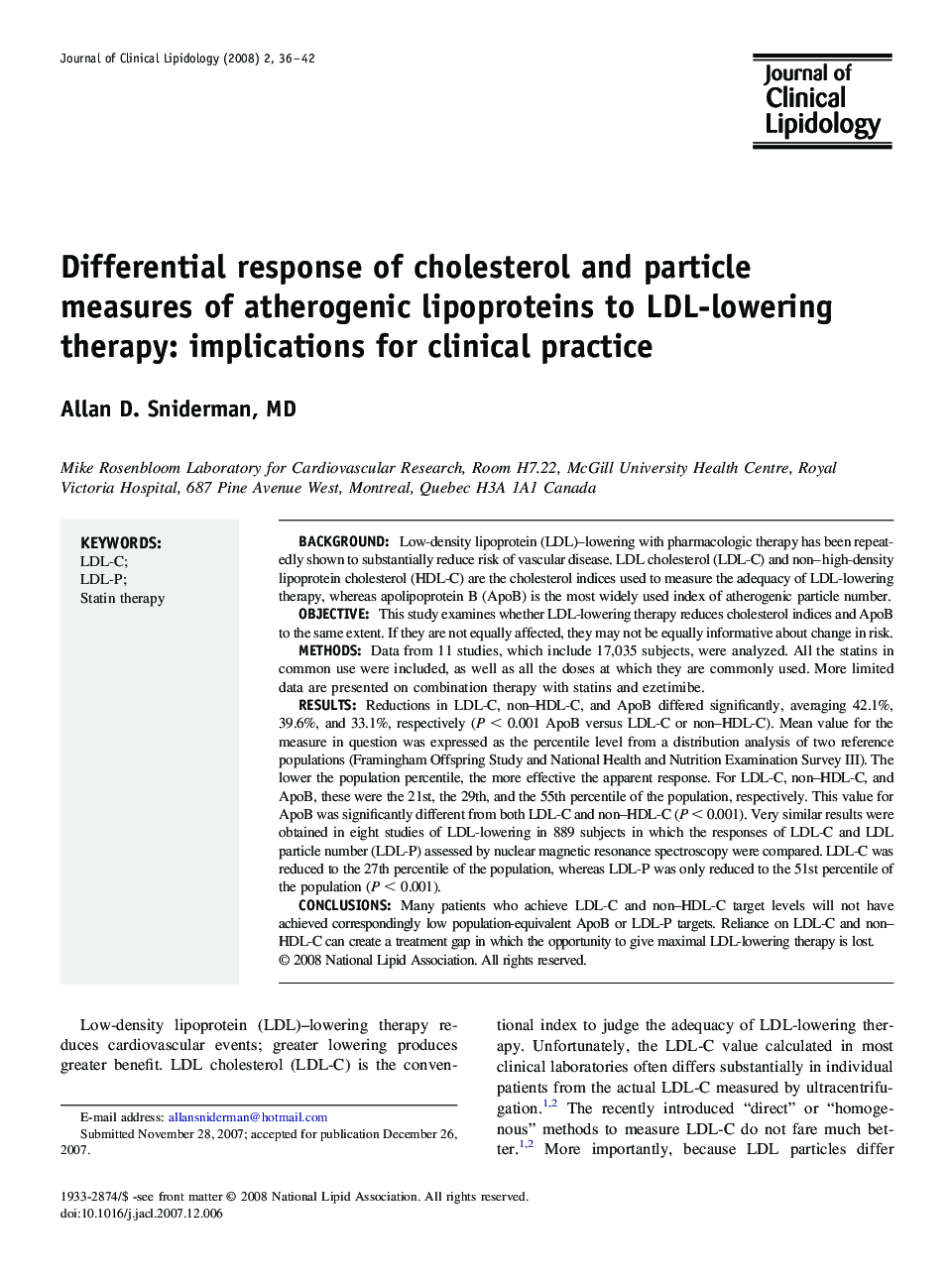| کد مقاله | کد نشریه | سال انتشار | مقاله انگلیسی | نسخه تمام متن |
|---|---|---|---|---|
| 2966967 | 1178823 | 2008 | 7 صفحه PDF | دانلود رایگان |

BackgroundLow-density lipoprotein (LDL)–lowering with pharmacologic therapy has been repeatedly shown to substantially reduce risk of vascular disease. LDL cholesterol (LDL-C) and non–high-density lipoprotein cholesterol (HDL-C) are the cholesterol indices used to measure the adequacy of LDL-lowering therapy, whereas apolipoprotein B (ApoB) is the most widely used index of atherogenic particle number.ObjectiveThis study examines whether LDL-lowering therapy reduces cholesterol indices and ApoB to the same extent. If they are not equally affected, they may not be equally informative about change in risk.MethodsData from 11 studies, which include 17,035 subjects, were analyzed. All the statins in common use were included, as well as all the doses at which they are commonly used. More limited data are presented on combination therapy with statins and ezetimibe.ResultsReductions in LDL-C, non–HDL-C, and ApoB differed significantly, averaging 42.1%, 39.6%, and 33.1%, respectively (P < 0.001 ApoB versus LDL-C or non–HDL-C). Mean value for the measure in question was expressed as the percentile level from a distribution analysis of two reference populations (Framingham Offspring Study and National Health and Nutrition Examination Survey III). The lower the population percentile, the more effective the apparent response. For LDL-C, non–HDL-C, and ApoB, these were the 21st, the 29th, and the 55th percentile of the population, respectively. This value for ApoB was significantly different from both LDL-C and non–HDL-C (P < 0.001). Very similar results were obtained in eight studies of LDL-lowering in 889 subjects in which the responses of LDL-C and LDL particle number (LDL-P) assessed by nuclear magnetic resonance spectroscopy were compared. LDL-C was reduced to the 27th percentile of the population, whereas LDL-P was only reduced to the 51st percentile of the population (P < 0.001).ConclusionsMany patients who achieve LDL-C and non–HDL-C target levels will not have achieved correspondingly low population-equivalent ApoB or LDL-P targets. Reliance on LDL-C and non–HDL-C can create a treatment gap in which the opportunity to give maximal LDL-lowering therapy is lost.
Journal: Journal of Clinical Lipidology - Volume 2, Issue 1, February 2008, Pages 36–42